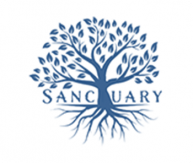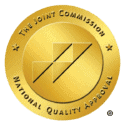TMS is an innovative therapy that can help those with addiction and co-occurring mental health disorders. This non-invasive treatment stimulates areas in the brain believed to affect a person’s mental and behavioral health. TMS offers hope for those who have tried nearly every type of treatment without their desired results. Sanctuary Treatment Center offers TMS therapy in Los Angeles, California to help treat the difficult mental health conditions that people often leave untreated.

What is TMS Therapy?
TMS therapy uses magnetic pulses to stimulate specific parts of the brain. For some with mental health disorders like depression, a lack of activity within the brain could cause symptoms. Thus, TMS treatment targets those areas to activate these areas. Clients find relief from symptoms as a result.
During TMS treatment, a technician uses a special device that fits over the person’s head. They will then focus magnetic pulses through the person’s skull which then reach the brain. Therefore, TMS treatment is non-invasive, meaning no surgery is involved. Clients can leave after their sessions.
Our TMS therapy in Los Angeles, CA can benefit those with conditions that do not respond to other forms of treatment. For instance, a person with depression who has tried medications and talk therapy without results might consider TMS. For addiction treatment, TMS can help reduce cravings for drugs and alcohol. In addition, TMS can treat underlying issues at the root of the addiction.
What to Expect During TMS Therapy in Los Angeles, CA?
Our Los Angeles TMS therapy involves preparation before the sessions begin. Next, a person will undergo the TMS sessions. Lastly, they might need to follow up or have regular “maintenance” sessions. These maintenance sessions will occur less often than regular treatment to sustain long-term recovery.
Preparation
As with any treatment, TMS therapy includes some preparation. This will help to know if the client can benefit from TMS. In addition, preparation ensures the client is a safe candidate for this form of therapy.
Therefore, clients will go through the following steps before TMS:
Physical Exam: Some clients might not be able to safely undergo TMS due to medical conditions. For instance, clients with metal medical devices, like pacemakers, would not be safe during TMS because of the magnetic pulses. In addition, people with a history of epilepsy or seizures need to inform their treatment team before TMS.
Psychiatric Evaluation: A psychiatric evaluation helps to know the client’s needs in treatment. This step also identifies clients unable to get TMS therapy. Clients with psychosis or suicidal ideations are not suited for TMS, for example.
Treatment Planning: After the exam and evaluation, a client can start to plan their treatment with TMS. Often, TMS is not the only part of a recovery plan. Most clients will have TMS as only one part of a diverse treatment plan. Thus, TMS can enhance other types of treatment.
Length of Treatment
Clients will need to attend sessions daily for about six weeks. These sessions will last about twenty to forty-five minutes at a time. After this six-week period, a person might return for follow-up or maintenance appointments. Maintenance appointments are regularly scheduled to prevent symptoms from returning. In addition, clients can schedule TMS as needed after the active stages of treatment if symptoms return.
Benefits of TMS Therapy in Los Angeles, CA
Some people go through treatment for years without the desired results. They might lose hope for recovery from substance abuse or mental health disorders. However, TMS therapy is great for those with symptoms resistant to other types of treatment. In other words, TMS offers hope to those who have tried nearly everything.
Thus, our TMS therapy in Los Angeles offers the following benefits:
High Rate of Success
TMS therapy has a high rate of success for those with challenging disorders. It can even help those with treatment-resistant issues that don’t respond to conventional treatment. In addition, TMS can restore brain functioning. Other types of treatment might then begin to work as a result.
Non-Invasive Procedure
The thought of stimulating the brain directly might make many people worry about surgery or other invasive procedures. However, TMS treatment is non-invasive. This means that clients don’t require any anesthesia or physical recovery afterward. They can go back to their daily routine afterward.
Little to No Side Effects
TMS has little to no side effects for most people. In contrast, most psychiatric medications often have some form of side effects. Therefore, TMS targets only the symptoms of the disease and nothing more. Some people, however, do get headaches, light-headedness, tingling sensations, and mild muscle spasms from TMS. These side effects are rare and don’t last long.
Outpatient Setting
TMS offers the benefit of being an outpatient form of treatment. In other words, clients go in for their sessions like they would when going for a doctor’s appointment. Clients don’t need to remain overnight in a facility during TMS treatment. While clients do need to come in daily for six weeks, they can still fit TMS around their daily lives.
Begin TMS Therapy in Los Angeles, California
TMS treatment offers hope to those with challenging to treat conditions. Some people with disorders like depression might not respond to traditional forms of treatment. Others use substances to self-medicate for these conditions. As a result, they then develop co-occurring mental health and substance use disorders. At Sanctuary Treatment Center in Los Angeles, California, we offer TMS therapy to help clients with these types of challenges.
Contact us today to see if TMS treatment is right for you.
All Services
- Acceptance and Commitment Therapy in Los Angeles, CA
- Group Therapy in Los Angeles, CA
- Individual Therapy Program in Los Angeles, California
- TMS Therapy in Los Angeles, California
- Neurofeedback Therapy in Los Angeles, CA
- Holistic Rehab in Los Angeles, California
- Trauma Therapy in Los Angeles, California
- Family Therapy for Addiction in Los Angeles, CA
- Cognitive Behavioral Therapy – CBT – in Los Angeles, California
- DBT Therapy in Los Angeles, CA
- EMDR Therapy in Los Angeles, CA
Sanctuary Treatment
Contact Us
![]()
Call Us:
+ (888) 584 4314![]()
Email:
info@sanctuary.com![]()
Address:
Whitestone Court, Tarzana, CA 91356

We Take Insurance!
Sanctuary Treatment Center accepts most private PPO insurance plans, as well as some private HMO plans. Through private insurance plans, individuals and families can access high quality addiction treatment services. If you have questions regarding insurances, please give us a call.
Licensed (or certified, or both) by the State Department of Health Care Services
License: #190042AP Expiration: 02/28/2026
Additional License: #190042BP Expiration: 04/30/2025 #190042CP Expiration: 07/31/2025

Copyright © 2022 Sanctuary Treatment Center.
